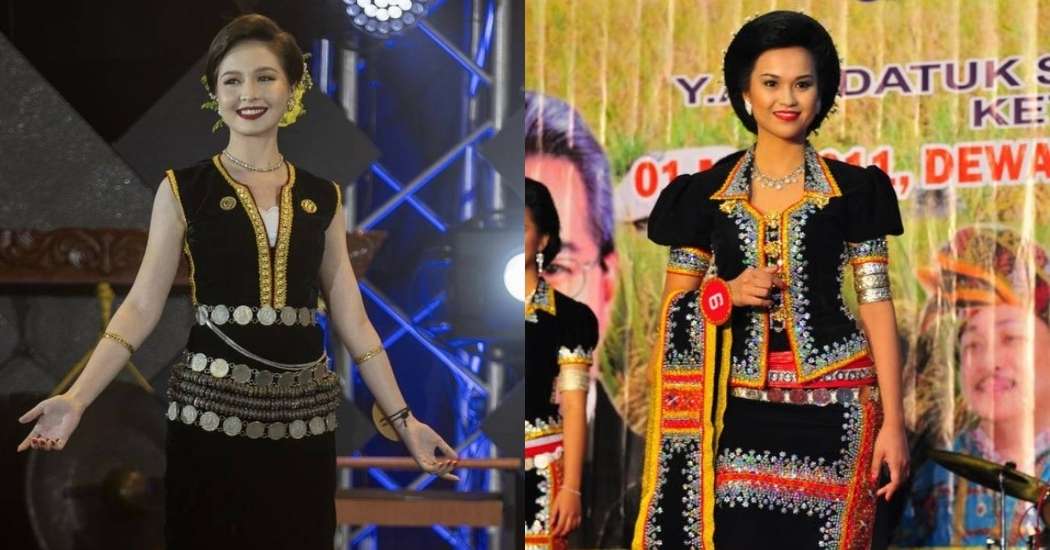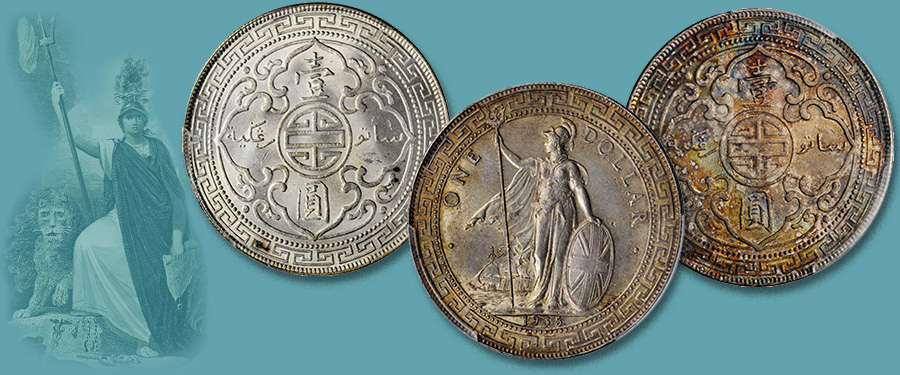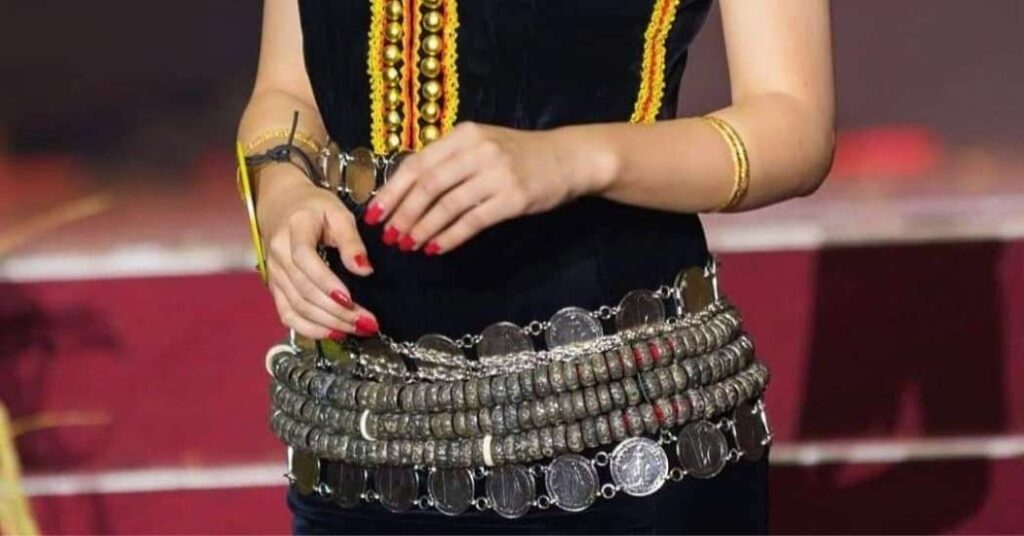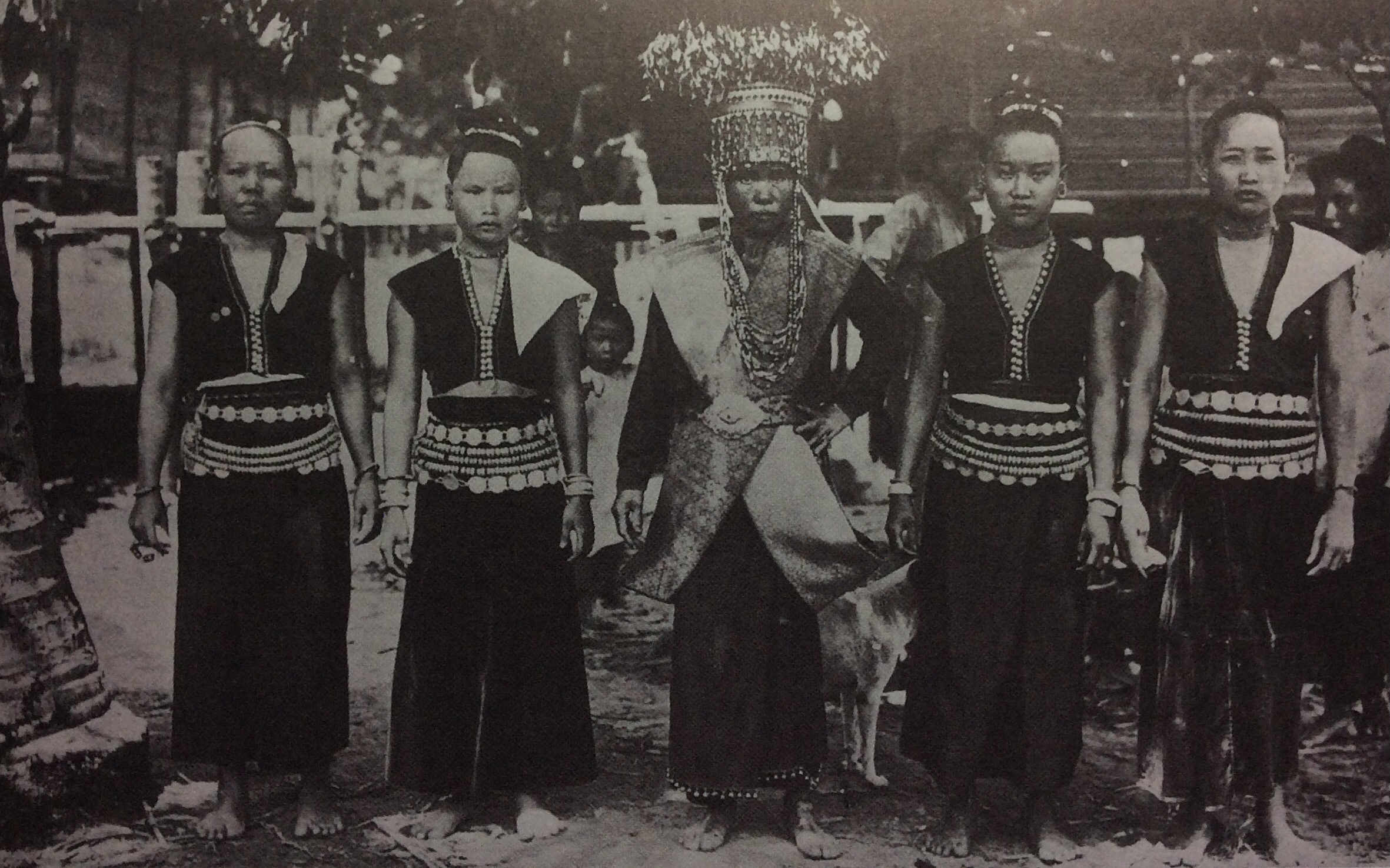Blog
The Story of Tangkong & Himpogot
Image source: Suili George Photography
There’s always something so graceful and elegant in the way a Kadazan-Dusun woman walks while wearing her full traditional costume. Maybe it’s because she is never in a hurry to go anywhere. Or perhaps it’s because she has to carry an extra three to seven kilograms of weight around her hip and waist. My guess is, it’s probably the latter.
The Tangkong
The tangkong is a form of a hip adornment or belt that is worn by the Kadazan-Dusun women with their traditional costume. An approximate number of 84 to 96 embossed brass rings and one shell disk are strung together with rattan strings known as hindavog, to create a tangkong. The tangkong is typically worn in a set of three. Single unmarried girls wear tangkong that are alternately strung with red, black and red rattan strings. As for a married woman, all three tangkong are strung with black rattan strings.

Image source: MySabah.com
The rattan strings are often “bare” somewhere at the back and never fully strung with the brass rings. This is done so in order to avoid the lack of breathing space or asampon.
The Himpogot
Unlike the tangkong, the himpogot is not exclusive to the Kadazan-Dusun women. On the contrary, it is actually worn widely throughout the native tribes of Borneo with their traditional costumes. Even the men of the Dusun Tindal and Dusun Lotud ethnics wear himpogot. So what is himpogot? Himpogot is the silver “dollar coin” belt that is made with 18 or more British Trade Dollars that are chained together.

Image source: Fiona Tibok
The name himpogot is actually derived from the word pogoton, which means to tighten, in the Kadazan language. Since it is widely worn in the tribes of Borneo, himpogot has many other names and ways of wearing. It is known as botungkat in Dusun, sementing ringgit in Iban, and pipirot linggit in Murut.
Depending on personal wealth, a Kadazan Penampang woman wears a maximum of three himpogot; one on the waist, one above the tangkong, and one below the tangkong. This way of wearing the himpogot is typically referred to as the ‘standard’. As for the ‘non-standard’ way of wearing, instead of wearing the himpogot with tangkong, the Dusun Lotud woman pairs one himpogot with a rattan hip band known as lilimbo.

Kadazan Penampang way of wearing himpogot (left) and Dusun Lotud way of wearing himpogot (right)
How valuable are they?
All around us, including the pages of lifestyle magazines and on the television screen, is proof that people are attracted to shiny things. This cultural predisposition could be explained simply by the fact that gloss has come to be associated with money and luxury. But the truth is, human beings do naturally gravitate towards shiny things to serve our innate needs. It’s actually scientifically proven. If that is the case, does shiny equals expensive when it comes to tangkong and himpogot?
Interesting enough, that is not the case. Tangkong and himpogot age like fine wine. The older they get, the more valuable they are. However, their quality and originality does come into play. If they’re antiques that have been passed down through the generations, there is a high chance that it’s worth very, very, very much.
Himpogot are mostly made by using British Trade Dollars that were issued from 1895 to 1937. An original himpogot will have .900 fine silver coins issued from different years and are naturally worn, whereas an imitation one will have the same year on all the coins and have a shiny surface that is silver-plated. Depending on the quality, the cost for an imitation himpogot is somewhere between RM90 to RM200. An original himpogot on the other hand can cost more than RM1000 and even up to RM3500. Imagine needing a set of three himpogot. Even a set of great quality imitation himpogot can cost you up to RM600!

Image source: coinweek.com
You thought that was expensive? Wait until I tell you the value of tangkong. When a tangkong looks dull, old and really oxidised with the signs of patina showing, they are worth so much more. An antique tangkong made individually by hand will have no two brass rings that look exactly the same. This means that more work went into crafting these works of art, as compared to today’s manufactured tangkong. The ‘new’ tangkong has brass rings that all look the same and only weighs half the weight of a traditional tangkong. Price wise, the price of a newly manufactured tangkong starts around RM650, while an original antique tangkong can even cost up to RM8000 for a complete set of three!
If you were to wear a complete original set of three tangkong and three himpogot in the ‘standard’ Kadazan Penampang way, the cost for these waist and hip adornments alone can easily be more than RM18,000! It’s no wonder wearing tangkong and himpogot is a sign of wealth!
Extra fun facts about tangkong and himpogot
- The Britannia is seen on the coin standing on a shore while holding a trident and a shield, with a merchant ship in the backdrop that is fully rigged. The feminine representation of the British Isles, Britannia, stands for power, freedom, and unity. When wearing a himpogot, the Britannia side must be facing outward.
- A set of three tangkong can weigh from three to five kilograms, while a set of three himpogot weigh more than 1.5 kilogram. That means, a full set of three tangkong and three himpogot can weigh up to 7kg!
- In the olden days, the tangkong were sometimes stretched out later in life for different reasons. One of those many reasons was to make it easier to carry a back basket.
- Each coin on an original himpogot has a different value and the value of himpogot with coins without holes is higher.
The traditional method of making new tangkong is no longer used nowadays. So consider yourself lucky if you still own any antique tangkong and himpogot that have been passed down from your ancestors. I hope that you’ll cherish and take good care of them as it is both an invaluable and a treasured gift, just as we here at OLUMES treasure the harmonious bond between opulent nature and traditional culture practices passed on from our elders.


